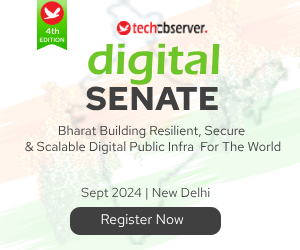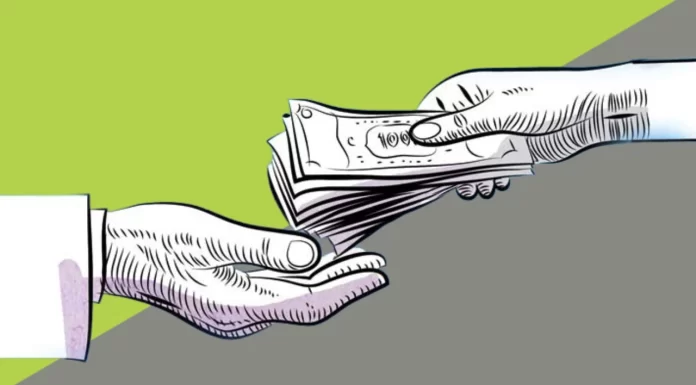A senior officer from Bihar once asked me, “What shall be done to deal with corruption at the lower level of bureaucracy?” It is true that the common man's interaction with the government is mainly with the lower cadres of bureaucracy, and their experience has not been very encouraging.
Even for mundane and routine tasks like obtaining caste certificates, income certificates, residential certificates, birth and death certificates, electric connections, no objection certificates for community functions, etc., the common man often has to bribe officials to get the work done.
The government has been making efforts by digitising records and promoting applications designed to support citizens in applying online for these and other similar schemes and programs. A digital literacy program has also been launched, with 6 crore citizens trained under the Prime Minister Grameen Digital Literacy – Saksharta Abhiyan (PMGDISA) to use digital tools and apply online for various benefits under government schemes.
However, much still needs to be done to make the common man's life easy and hassle-free when availing services from the government. Merely computerising, digitising, and facilitating electronic access has not been able to address the menace of corruption.
Before sharing what was suggested to the Bihar officer, I asked Bing, the AI tool from Microsoft, about ‘steps to check corruption in India.' The response included the Prevention of Corruption Act, the Right to Information Act, the Whistleblower Protection Law, the Lokpal Law, digital technology, an efficient judiciary, political will, and good governance as various steps taken to address the issue of corruption in India.
ChatGPT's response was similar, with the addition of establishing anti-corruption bodies such as the CVC, CBI, public awareness campaigns, and international cooperation to implement best practices.
In India, we have the desired legislation, political will (at least at the central government level), and institutions like the CVC and CBI, but still, the level of corruption affecting the common man is very high. India ranks 93rd in the Corruption Perception Index across 180 countries.
It is true that there is “no” corruption at the central government level since Mr. Modi became the Prime Minister. This is due to his control and “No Tolerance” policy at the ministerial level, which has had an impact on the bureaucracy at all levels. However, this is not true at the state level, even in BJP-ruled states.
I have already seen Class IV staff asking for “Bakshish” in the corridors of North Block from the CMD of a public sector bank after he came out of a meeting with the minister in 2002. This rampant and brazen corruption in central government offices is no longer there. I remember an incident in the Lucknow Secretariat when, after a meeting with a secretary, the peon came with us in the lift to see us off, which was very unusual.
He unashamedly asked for “chai-panni.” We, of course, did not oblige him, and I am sure this must have been routine for everyone coming to meet the secretary or other senior officials. Whether the secretary and other staff were aware of this practice or not, I am not very sure.
The government has attempted to deliver certain services through the PPP mode, wherein the front office is managed and operated by a private company and the back office is still staffed by government employees, as in the case of the ‘Passport Sewa Kendra,' land registration offices, and transport offices (for driving licenses, etc.).
This model, with the front office managed privately and the back office by the government, has made life easier for citizens, as the front offices operate on a token system (FIFO). However, whether the bribes or corruption have been stopped remains a big question mark.
Reports indicate that the cost of transactions for land registration (amounts paid other than the prescribed fees/charges) has gone up for citizens compared to the earlier manual system. Digitisation and adoption of the PPP mode have not been able to address the issue of corruption in the Indian government's service delivery system.
In the state government where I worked, there was almost zero corruption. This was a communist-ruled state. The political leadership was honest to the core – they would eat food after meetings at the party office and not ask the district administration to arrange it. This was also followed by the bureaucracy at the highest level – the chief secretary paid for even a cup of tea arranged at the circuit house.
Officers were not allowed to use government vehicles for personal purposes – the officers' wives had to travel by rickshaw to buy vegetables or groceries from the market. One could get the job done, even set up an industry, without paying a single paise in bribes.
The lower-level functionaries were watched by the party cadre, and any attempt to indulge in unholy practices was seriously dealt with. The party cadre acted as a watchdog for the lowest level of the bureaucracy. This was probably the only state in the country that displayed such a level of integrity in the entire political and bureaucratic setup.
Is this the only way to deal with the menace of corruption at every level of the government structure? Political commitment both in preaching and practice, with the will to enforce it at the higher echelons of bureaucracy, can become an effective tool to promote and build a citizen-centric government devoid of corruption.
Grassroots-level mechanisms, like Panchayats, to effectively address and deal with issues of common citizens, supported by simplified procedures with checks and balances, can solve the menace to a great extent at that level.
I once went to the transport department in Delhi to get my licence transferred from another state. There were four forms to be filled for availing various services. I asked them why there couldn't be just one form where a person could fill in details required for the concerned service. The KYC would be the same for all. The reply from the concerned officer was that each service is under a specific section of the MV Act, and that is why there are different forms.
Such an irrational response reflected that while designing the forms, no one had applied their mind at the higher level and left it to the clerical staff. This applies to many other services delivered by government departments. In the case of land registration, the details required are the KYC of the seller, buyer, land particulars, consideration amount, etc., and therefore the land deed should be 1-2 pages.
However, the land deed is usually 10-20 pages. When asked why there were so many pages, one secretary replied that the deed writer is paid per page, and if it were only 1-2 pages, they would go on strike as their income would be affected. So the system is focused on looking after deed writers and not the public it is supposed to serve.
When the Jan Aushadhi scheme was launched, in a meeting with the ex-Minister, I suggested that one lakh Jan Aushadhi centers could be opened in one year if the requirements for licensing and having a pharmacist could be dispensed with. An online course for six months (assistant pharmacist) would support this and expedite the scheme's implementation.
For the license, every center would upload the daily stock and sales with an attached copy of the prescription to allow monitoring. The Minister agreed; however, later, the officials informed that the lobby of the Pharmacist Association would make functioning difficult for them (ask too many Parliamentary questions), and therefore, this was not considered.
These examples only qualify the need for extensive reforms in the process and practice for dispensation of “license Raj,” at least for services that affect the life of the common man.
Now, coming back to the question asked by the Bihar officer and my suggestion to him – it was suggested that there is a need to separate the front and back office physically and electronically. For example, the front office can be in Patna while the back office is on the outskirts of the city.
The front office will only receive the application and necessary documents from the citizen and send them to the back office electronically, where they will be processed, and the final outcome informed to the front office/citizen directly. The citizen shall not be asked to visit the back office under any circumstances and shall not know the staff/officer responsible for approval.
This will also apply to the payment of bills of contractors and other service providers. I was informed that this proposal was put up before the cabinet in Bihar and was approved; however, the officer in the meantime got transferred to Delhi, and it was never implemented.
This concept of complete segregation of the front and back office is implemented in new private banks. A person can apply for a loan at the front office in Delhi, but the approval and sanction are done at the back office in Mumbai. A similar framework implemented in government offices can also contain the corruption menace to a great extent.
There is a need to design a framework to address the issue of corruption in bureaucracy, especially at the cutting edge of public interface.
Using technology, redesigning relevant rules and processes, segregating the front and back office physically and electronically, and empowering communities through awareness campaigns can go a long way in not only simplifying the life of the common man but also improving the country's ranking in the Corruption Perception Index across the world.









